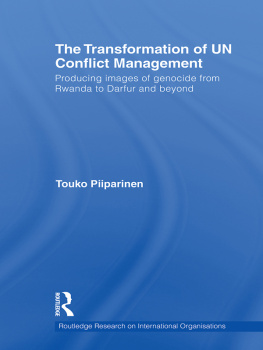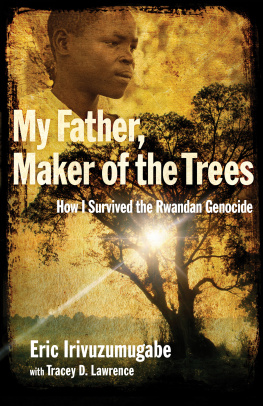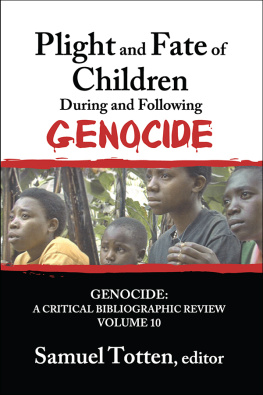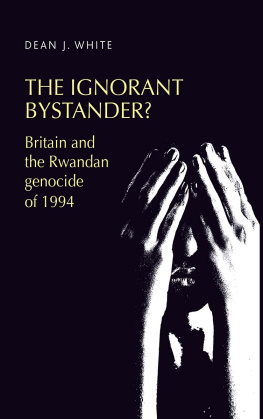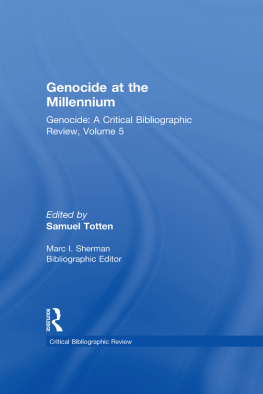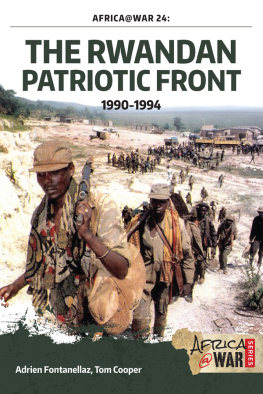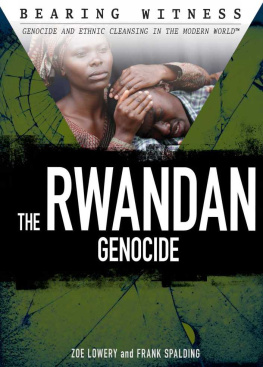The Transformation of UN Conflict Management
The world has vowed Never again in memory of the 800,000 Rwandans and other groups slaughtered by gnocidaires. Yet, ever since the Holocaust, the international community has repeatedly betrayed its pledge, most notably in 1994 with regard to the Rwandan Tutsi, and again ten years later in Darfur.
This book examines how the UN failed to prevent or halt the Rwandan genocide: the most efficient mass killing in history. It offers a new explanation, focusing on the structure of the UN and four mechanisms which were pertinent to UN conflict management at that time: early warning; bureaucratic rationalisation; organisational learning; and Western normalisation. The author sees the Rwandan case as a child of its time, or a focal point in which the dysfunctions of the ailing conflict management mechanisms of the 1990s combined with devastating consequences. The book proceeds to examine the transformation of these mechanisms from Rwanda to Darfur a development which is regarded as indicative of a wider tendency, or direction in UN conflict management over the past ten years and in the foreseeable future.
This book will be of great interest to students and scholars of political science, international relations, ethnic politics, international organisations and conflict studies.
Touko Piiparinen is currently a Postdoctoral Researcher at the Centre of Excellence in Global Governance Research in Helsinki. He is on leave of absence from the Ministry for Foreign Affairs of Finland, where he has been previously posted in the Unit for UN Affairs and as the Deputy Head of Mission at the Embassy of Finland in Riyadh, Saudi Arabia. He has also worked in the ISAF operation in Afghanistan, and in the KFOR operation in Kosovo.
Routledge research on international organisations
1 The Transformation of UN Conflict Management
Producing images of genocide from Rwanda to Darfur and beyond
Touko Piiparinen
The Transformation of UN Conflict Management
Producing images of genocide from Rwanda to Darfur and beyond
Touko Piiparinen

LONDON AND NEW YORK
First published 2010
by Routledge
2 Park Square, Milton Park, Abingdon, Oxon OX14 4RN
Simultaneously published in the USA and Canada
by Routledge
270 Madison Ave, New York, NY 10016
Routledge is an imprint of the Taylor & Francis Group, an informa business
This edition published in the Taylor & Francis e-Library, 2010.
To purchase your own copy of this or any of Taylor & Francis or Routledges collection of thousands of eBooks please go to www.eBookstore.tandf.co.uk.
2010 Touko Piiparinen
All rights reserved. No part of this book may be reprinted or reproduced or
utilised in any form or by any electronic, mechanical, or other means, now
known or hereafter invented, including photocopying and recording, or in
any information storage or retrieval system, without permission in writing
from the publishers.
British Library Cataloguing in Publication Data
A catalogue record for this book is available from the British Library
Library of Congress Cataloging-in-Publication Data
A catalog record for this book has been requested
ISBN 0-203-87067-0 Master e-book ISBN
ISBN10: 0-415-54408-4 (hbk)
ISBN10: 0-203-87067-0 (ebk)
ISBN13: 978-0-415-54408-5 (hbk)
ISBN13: 978-0-203-87067-9 (ebk)
Contents
Figures
2.1 | Synthesis of Bhaskars logic of scientific discovery and Sayers method of double movement |
2.2 | Emancipatory windows |
2.3 | Structural embeddedness of the member states of the Security Council |
2.4 | The Security Council as an open system |
3.1 | Detection mechanisms of the UN |
3.2 | Securitisation mechanisms of the UN |
3.3 | Summary of the analytical framework: the Security Council as an open system |
4.1 | Decontextualised explanations of the UNs failure in Rwanda |
5.1 | Summary of the malfunctions of early warning mechanisms |
6.1 | Summary of the dysfunctions of organisational learning mechanisms |
6.2 | Summary of the dysfunctions of bureaucratic rationalisation |
6.3 | Summary of the dysfunctions of Western normalisation |
8.1 | Emancipatory windows to prevent the Rwandan genocide |
8.2 | Emancipatory windows to prevent present and future genocides |
Acknowledgements
Rwanda of 1994 was the ground zero of a country and an organisation. It wrecked the lives of a million people. It also shattered the credibility of the UN conflict management system. It would not be an overstatement to argue that the UN has never been the same since its failure to prevent and manage the Rwandan genocide, neither in the imagination of people who had viewed the UN as a standard-bearer of humanity, nor institutionally, as the conflict management mechanisms of the UN have been drastically transformed since the disaster. The time has come to assess this structural development at the UN, which is the objective of the present book. For me, like many other researchers, the UNs failure in Rwanda is a place and time in history that manifests itself through indirect sources: through stories, archival records and interviews, as well as the unique opportunity I have had to observe the working methods of the UN and particularly that famous horseshoe-shaped table, a place in which the decision to withdraw the UN from Rwanda was made years earlier, and my visit to the International Criminal Tribunal of Rwanda in Arusha, Tanzania. The main driving force behind my decade-long journey has undoubtedly been a desire to understand humanitarianism and one of its greatest letdowns. This motivation made the University of Wales, Aberystwyth, a natural choice of the home institution for my PhD thesis, which I completed in autumn 2005 and is now transformed into a book.
During the ten years of writing this book I have become more and more convinced of a long-held wisdom of Critical Theory which has prevailed in the philosophy of science over centuries, that human beings are not only producers but also products of the social world to which they belong. Such an assertion could not be more apposite to this study, which is deeply indebted to the stimulating and warm social environment of the Department of International Politics at the University of Wales, Aberystwyth. Many individuals belonging to that environment deserve more gratitude than it is possible to express in this limited space. I feel similar gratitude to my colleagues at the Ministry for Foreign Affairs of Finland, particularly for providing me with opportunity and intellectual space to complete this book, which I hope combines practical experience and academic research in a mutually reinforcing way.
First and foremost, I would like to thank Nick Wheeler, who has been not only the best supervisor imaginable but also a friend from the very beginning of my PhD research. His invaluable support, encouragement and engagement in my PhD project frequently amounted to self-sacrifice, especially in summer 2004, when I provided him with a draft chapter of a hundred pages, which he nevertheless managed to read and return with meticulous comments like he always did. Many of my ideas, contacts and research visits I owe to him, as well as some of the more engaging discussions and debates informing this book, including that concerning the ontological nature of the horseshoe-shaped table.

